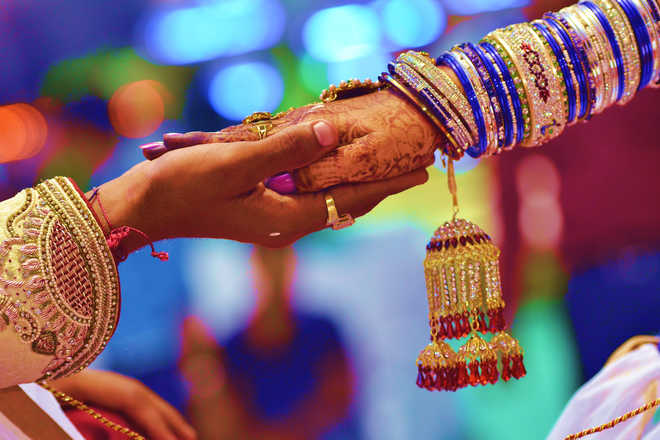
New Delhi- Prime Minister Narendra Modi on Friday said the government will soon take a decision on revising the minimum age of marriage for girls after it receives report from the committee set up for this.
The prime minister said the girls’ gross enrolment ratio in education has turned higher than that of boys for the first time in the country because of several efforts taken by the government in the last six years.
Modi was addressing a video conference after releasing a commemorative coin of Rs 75 denomination on the 75th anniversary of the Food and Agriculture Organisation (FAO).
“There is an important deliberation going on to decide what should be the ideal age of marriage for daughters,” Modi said.
The prime minister said he has been receiving letters from women from across the country, asking about the report of the committee and when the government will take a decision on it.
“I want to assure them, the government will soon take its decision after the submission of the report,” Modi said.
In his Independence Day speech, the prime minister had announced that the government was deliberating on what should be the minimum age of marriage for women and has set up a committee to look into the matter.
Currently, the minimum age of marriage is 18 years for women and 21 for men.
Modi highlighted the efforts taken by his government in the last six years to fight against malnutrition.
The prime minister said his government has taken an integrated and holistic approach to deal with the challenge of malnutrition.
The government has adopted a multi-dimensional strategy to work on all those factors responsible for high malnutrition, he added.
The government has started National Nutrition Mission, Modi informed.
Highlighting other achievements, the prime minister said the government has built 11 crore toilets across the country under the Swachh Bharat Mission and has launched Jal Jeevan Mission to provide piped drinking water.
The government is also providing sanitary pads at Re 1 to poor women, he further said.
“Because of these efforts, for the first time, the gross enrolment ratio of girls in education is more than that of boys,” Modi said.
On malnutrition, the prime minister said the Food and Agriculture Organisation (FAO) has closely followed India’s fight against this problem in past decades.
Some departments at different levels in the country made efforts but the scope was either limited or scattered, he pointed out.
Modi said pregnancy at tender age, lack of education and awareness, inadequate availability of pure drinking water and lack of cleanliness were some of the factors due to which the desired results against malnutrition could not be achieved earlier.
Modi said he had started various programmes to tackle malnutrition in Gujarat when he was the chief minister of the state.
After becoming the prime minister in 2014, Modi had said he started new programmes with fresh and holistic approach, based on his experience as a chief minister.
Modi complemented the FAO for playing an important role in raising farm production and making efforts towards eradicating starvation and malnutrition across the world, including in India in the last 75 years.
The prime minister said the commemorative coin of Rs 75 denomination has been released in recognition of FAO’s contribution and services.
He also thanked the FAO for supporting India’s proposal to declare 2023 as International Year of Millets and said this will boost the availability of coarse cereals and enhance the income of small and marginal farmers.
The government, Modi said, is making efforts to increase the production of millets and boost consumer demand.
The prime minister also dedicated to the nation 17 recently developed biofortified varieties of eight crops.
Follow this link to join our WhatsApp group: Join Now
Be Part of Quality Journalism |
Quality journalism takes a lot of time, money and hard work to produce and despite all the hardships we still do it. Our reporters and editors are working overtime in Kashmir and beyond to cover what you care about, break big stories, and expose injustices that can change lives. Today more people are reading Kashmir Observer than ever, but only a handful are paying while advertising revenues are falling fast. |
| ACT NOW |
| MONTHLY | Rs 100 | |
| YEARLY | Rs 1000 | |
| LIFETIME | Rs 10000 | |












